Director Kevin Macdonald on how his documentary High & Low: John Galliano, about the disgraced fashion icon, evolved into the exploration of a psychological mystery.
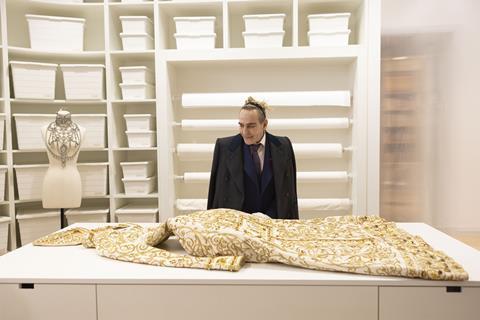
Kevin Macdonald knew he wanted to make a film about cancel culture. During the 2020 lockdown, the director of Touching The Void and The Last King Of Scotland read everything he could find on the subject, and about why some celebrities are exiled from mainstream approval, and why some are allowed to return. “Specifically,” he says, “the idea of how society orchestrates the forgiveness of people now that we don’t have religion to give us that mechanism.”
But making a documentary on the subject had one obvious difficulty. If someone has behaved so badly that they require forgiveness from society, they do not necessarily want to discuss it on camera.
The breakthrough came when someone suggested Macdonald contact Gibraltar-born British fashion designer John Galliano. He had been the darling of the fashion world in the 1990s and 2000s, when he brought his trademark flare and theatricality to Christian Dior in Paris. He was hailed as an artistic genius, and a shameless extrovert who would strut down the catwalk in a Napoleonic bicorne hat — or bare-chested. But he could be self-destructive and in 2010 his reputation plummeted when he was filmed snarling drunken anti-Semitic insults in a bar in Paris.
Galliano was sacked by Dior, and ostracised by many of his colleagues — but, after a couple of years of apologising and soul-searching, he made a comeback of sorts, joining Parisian fashion house Maison Margiela in 2014. Yet, says Macdonald, Galliano “is still reluctant to go out to certain places, and there are still people who didn’t want to be interviewed because they were reluctant to be associated with him”.
Being a lifelong cinephile, Galliano felt that a film about his downfall might help him to process and understand it, and in August 2021 Macdonald shot the first interviews for what would eventually become High & Low: John Galliano. Meanwhile, Harold van Lier, a British-French producer, was scouting projects for the film production arm of TF1, the French television channel, and happened to get in touch. “We got a yes within about two weeks,” says Macdonald, who had worked with TF1 on his 2013 dystopian teen science-fiction drama How I Live Now. “It was a great stroke of fortune because it’s a French-British subject, so to have a French financier paying for the whole thing was ideal.”
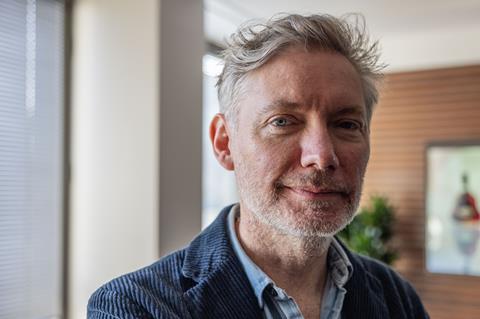
Another notable name on the film’s credits is Condé Nast Entertainment, a company that “helped us navigate the world of fashion”. Condé Nast publishes influential industry magazines, including Vogue and Vanity Fair, and was key to persuading icons such as Naomi Campbell and Kate Moss to appear — as well as Sidney Toledano, a Jewish businessman who had been the CEO of Dior when Galliano made his vile remarks, for which he was convicted of a hate crime in the French courts.
The company’s participation did, however, raise questions about editorial independence. “There’s something about Condé Nast and Anna Wintour [former Vogue editor and now the company’s chief content officer] that makes everyone very suspicious in the world of fashion,” Macdonald observes.
“They are [often seen as] arch manipulators — but that couldn’t have been further from the truth. It slightly riles me when people make those assumptions, because this film is an entirely independent production financed by a French producer, and I had overall editorial control. Compare that to a film about David Beckham on Netflix, produced by himself!”
Macdonald insists that everyone involved “wanted an honest film to be made”, and the resulting documentary is sympathetic towards Galliano, and certain of his brilliance. But neither the designer nor the fashion industry comes out of High & Low untarnished.
“John behaved very badly [even before the anti-Semitic rants],” Macdonald notes. “He destroyed hotel rooms and terrorised employees, all of that rock ’n’ roll stuff. They just let that pass, because they were making a lot of money and they thought he was very good. I wouldn’t say the film is an indictment of high fashion, but I think it makes you question what this industry is.”
In this regard, fashion’s biggest companies could be seen to resemble the record companies that turned a blind eye to Whitney Houston’s emotional struggles, as documented in Macdonald’s Whitney (2018). High & Low would also make a sobering double bill with Ian Bonhôte and Peter Ettedgui’s 2018 documentary McQueen, which probes the death by suicide of fellow British designer Alexander McQueen and notes the insane workload to which he, like Galliano, was committed.
“These two characters are in many ways very similar,” Macdonald agrees of Galliano and McQueen. “They’re both gay, white, working-class Londoners who go to St Martins school of art. John is the one who breaks the ice in Paris when he becomes the first British designer to run a fashion house there, Givenchy, and when he moves on to Dior, McQueen is brought in behind him. And then it’s less than a year before John’s incident happens that McQueen [dies by] suicide, so you have to think there was something going on at that time.”
Still, High & Low is not so simplistic as to blame the fashion industry alone for Galliano’s diatribes. Rather, the film is a psychological mystery — “a policier”, in Macdonald’s words — which investigates why he might have been so toxic. Was it down to his early childhood in Gibraltar? His violently homophobic father? His grief at the death of his right-hand man Steven Robinson? One way that Macdonald illustrates these theses is to intercut footage of Galliano with snippets of Abel Gance’s 1927 silent epic Napoléon, a key influence on the designer’s work (and his headgear).
“There is a parallel between John and Napoleon,” Macdonald notes. “He’s someone who is dark-skinned and Mediterranean, and who is always different, always bullied. And then the exile and the return. Maybe we missed a trick by not releasing it at the same time as Ridley Scott’s Napoleon!”
The other film that was a key reference point is The Red Shoes, which was co-directed by Macdonald’s own grandfather, Emeric Pressburger, together with longtime collaborator Michael Powell. “Again, it’s one of John’s favourite films, and its theme is about being so obsessed with your art that you die for it,” says the director. “I suppose both films are accessing his inner life in a way that maybe he isn’t able to articulate verbally. And it’s nice to find a way to celebrate old films at the same time as making a film about John.”
Open-ended account
Ultimately, Macdonald could not wholly account for Galliano’s outbursts — and neither could Galliano. “I started off by thinking the film was going to be about forgiveness and cancel culture,” Macdonald says. “But for me it became about the great mystery of the human mind and the unknowability of other people. How do we know why someone does or says something, especially when they don’t even know themselves? The film is open-ended and unresolved, but I’m happy with that. One of the ways I sold it to TF1 was by saying that people will want to see it because they’ll want to argue about it afterwards with their friends.”
Following High & Low, which premiered at Telluride and releases in the US and UK in early 2024 via Mubi, Macdonald is now keen to move back to scripted feature films, having completed three documentaries since the release of The Mauritanian in 2021.
But he has also “stepped into a production-y role”, setting up authored documentaries with Brad Pitt’s company Plan B and maintains that documentaries can scrutinise the human condition in more detail than any drama. “You can really delve into the strangeness of people,” he says. “Documentary is all about understanding that people are really, really odd.”











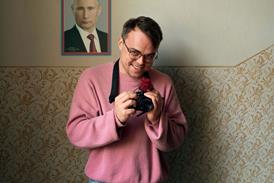
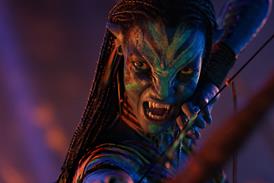
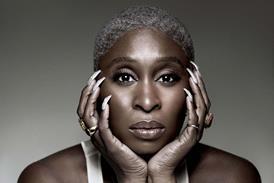








No comments yet